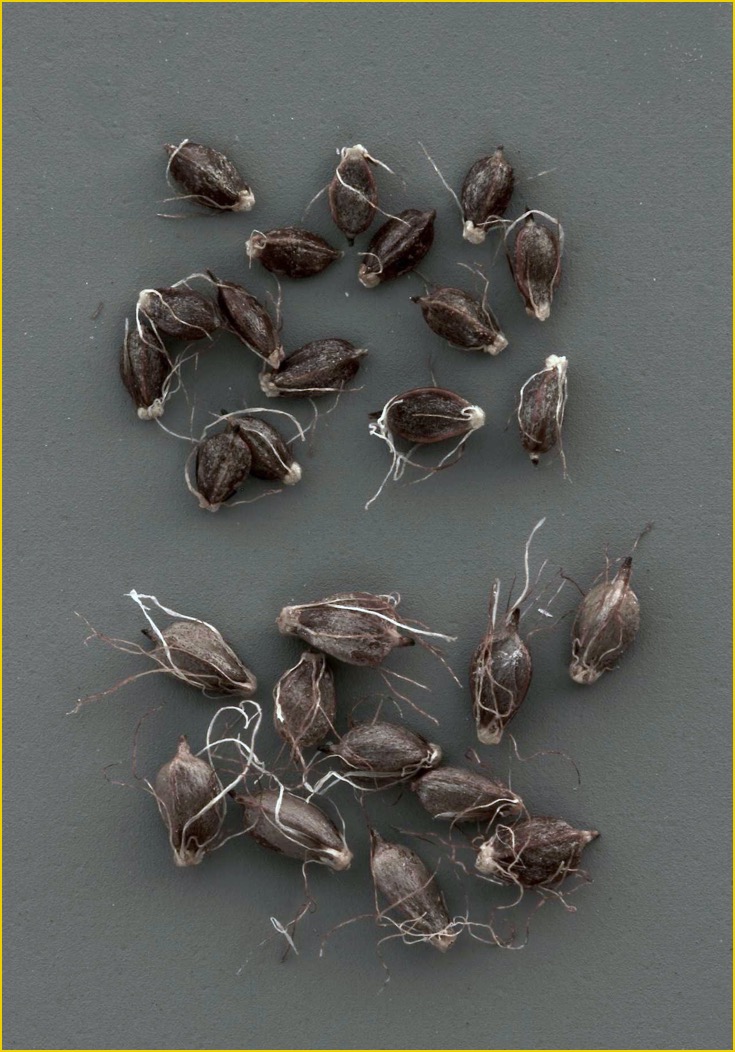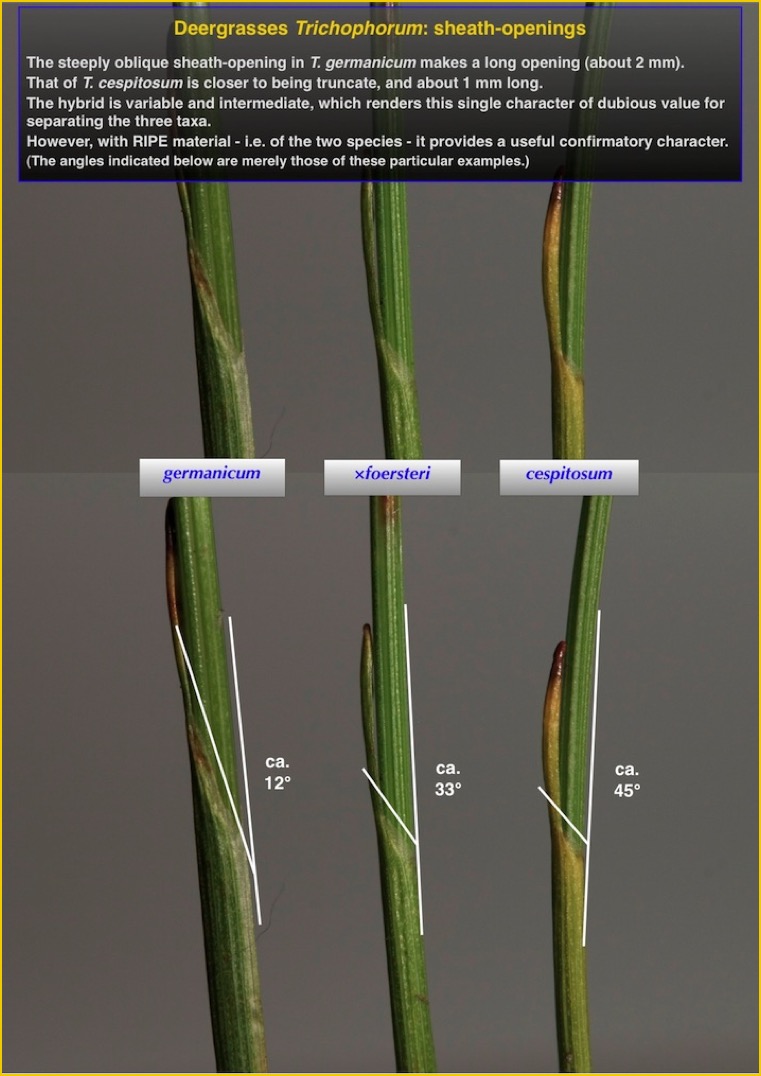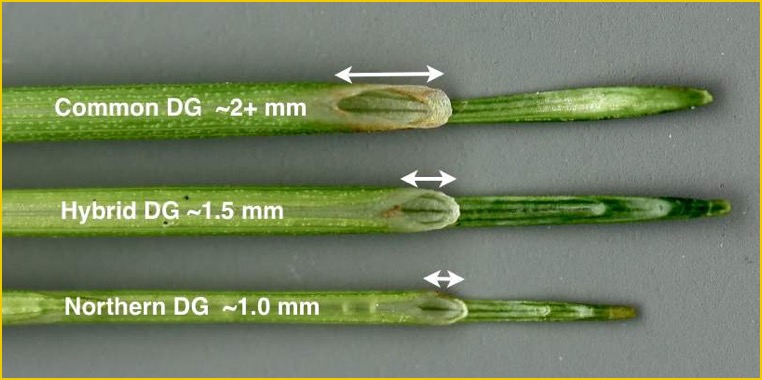Trichophorum
Deergrasses
Field identification ~ 2: Nuts
Nuts
Amongst mixed populations of Northern and Hybrid Deergrass the tiny ripe nuts (July to September) of Northern can be very inconspicuous! [However, if you spot them, you are allowed a triumphant air-punch and muttered “Yes!”.]
Cup many stems against your hand or white paper to make the tiny ‘flea-sized’ black-looking nuts – often only one or two per head – more visible:

Northern Deergrass T. cespitosum in ripe fruit (above)
(both Butterburn Flow, Cumbria, 11 August 2010)
Hybrid Deergrass T. ×foersteri with bare stem tops (below)
The nuts of Northern Deergrass are shiny and look blackish at a distance (actually dark brown), and ripen earlier than the larger, rather paler, brownish, nuts of Common Deergrass, which often have a grey bloom:

Northern Deergrass T. cespitosum (above)
(to same scale)
Common Deergrass T. germanicum (below)
(below) nuts of:
Northern Deergrass T. cespitosum (upper)
Common Deergrass T. germanicum (lower)
At the risk of labouring the point, the hybrid does not ripen nuts: the aborted ovaries and the glumes drop in the June/July period.
Sheaths
The angle to the stem of the sheath-opening of the uppermost leaf is markedly different between the two species, and (if there are ripe nuts – hence you have the species, not the hybrid) is pretty diagnostic.
The hybrid is variably intermediate.
In Northern Deergrass the sheath-opening can be fully ‘truncate’ or transverse – i.e. at 90˚ to the stem, and then very distinctive – but usually has an ‘angle’, up to about 45˚, and can then overlap with the hybrid in this character.

The length of the sheath-opening is a very good indicator: the figures given below are typical, although it is important to measure at least four from one plant to allow for variation.
Again, if the plant has nuts ripening (i.e. is therefore species, not hybrid) the sheath length is diagnostic. A sheath-opening 2 mm or more is diagnostic for T. germanicum whilst shorter than 1 mm is diagnostic for cespitosum. (But do test this!)

The measurement is much easier to make if the stem has been pulled out, leaving the sheath, as shown above.
Whether this is easy to achieve is very unpredictable! Try this: cut or snap the stem about an inch below the sheath-top. Grab the sheath+stem firmly near the cut base – a thumbnail pressed onto the first finger should suffice – and pull the stem out with the steadiest pull you can manage. Sometimes it slides out smoothly; sometimes stem or sheath snaps! It is worth persevering.
Other features may provide useful distinguishing points, but I have not looked at them: I suspect that the variability of the hybrid will mean that the extremes might be pointers to the species, whilst a midpoint may point to the hybrid, but there will be too much overlap for the feature to be useful. (As can be seen in the examples above, the leaf blades of the germanicum and the hybrid are about equal in length.)
e.g.
- length of leaf-blade?
- ratio of leaf-blade length to sheath-length?
- length of ‘ligule’ of free tissue at upper end of sheath-opening?
Links to other pages
Summary pages
Identification pages
Other information
